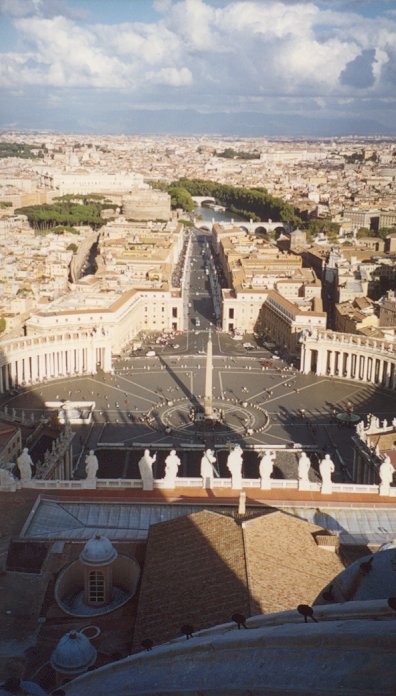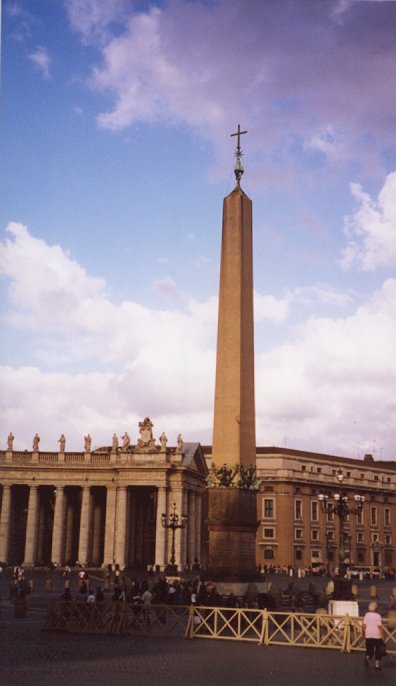

Vatican City
St. Peter's Basilica
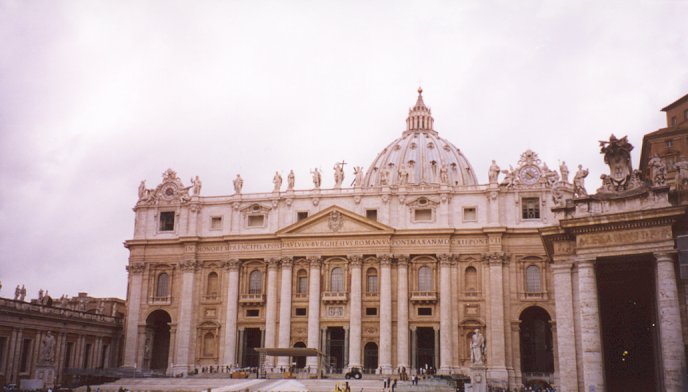
St. Peter's is overwhelming. You can tell by the size of the people how big the building is. To further remove all sense of proportion, the architectural elements get larger the higher they are from the ground. For example the statues above the facade are larger than the ones on the lower colonnades.
With this picture from the cupola, you can see the difference in the height of the statues.
The Tiber is in the distance, and the central section of Rome is in the upper right of the picture.
The obelisk in St. Peter's Square, which is not square at all but eliptical, originally stood at the center of the spina of the Circus of Caligula.
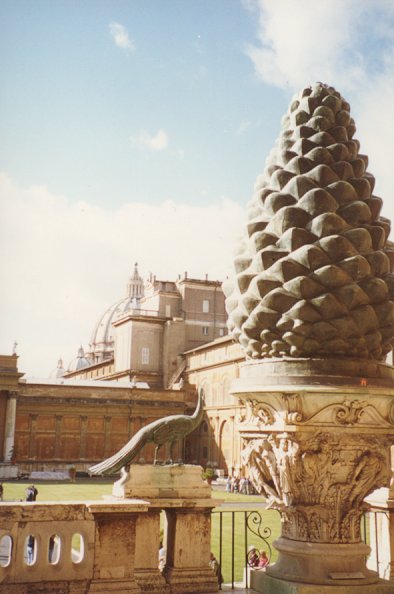
Here is the courtyard of the Vatican Museums with the dome of St. Peter's in the distance. The giant pinecone sculpture used to be in the courtyard of Old St. Peter's.
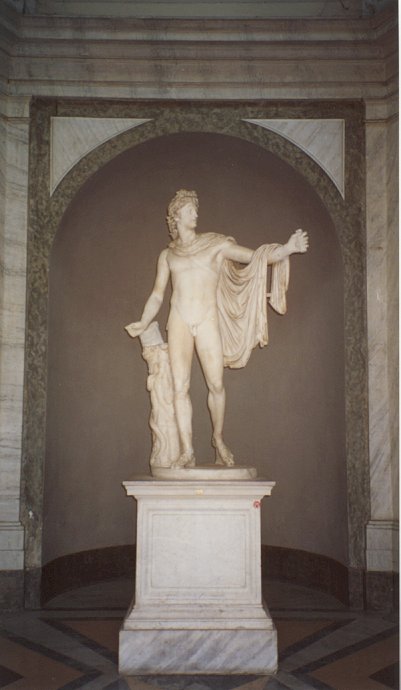
What amazed me about the Apollo Belvedere beyond its exquisiteness was its location. It is placed in an outdoor courtyard. Yes, it is covered, but it still undergoes all the temperature changes of the weather. In the United States we would lavish on it computer monitored climate control.
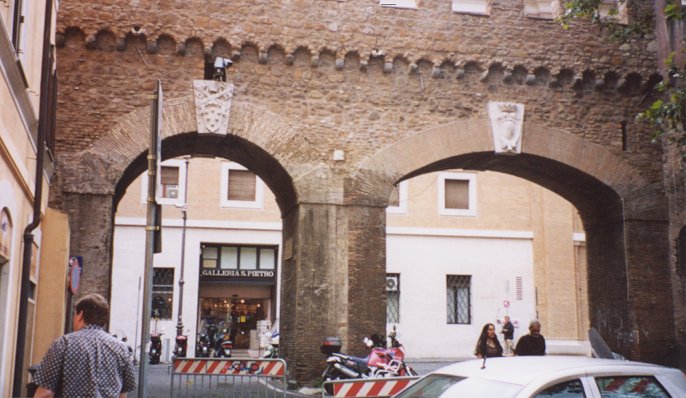
Since the wall supporting the Vatican Corridor was not a prime defensive structure, gates like this one could be built.
The papal seal over the left arch incorporates the coat of arms of the Medici family.



